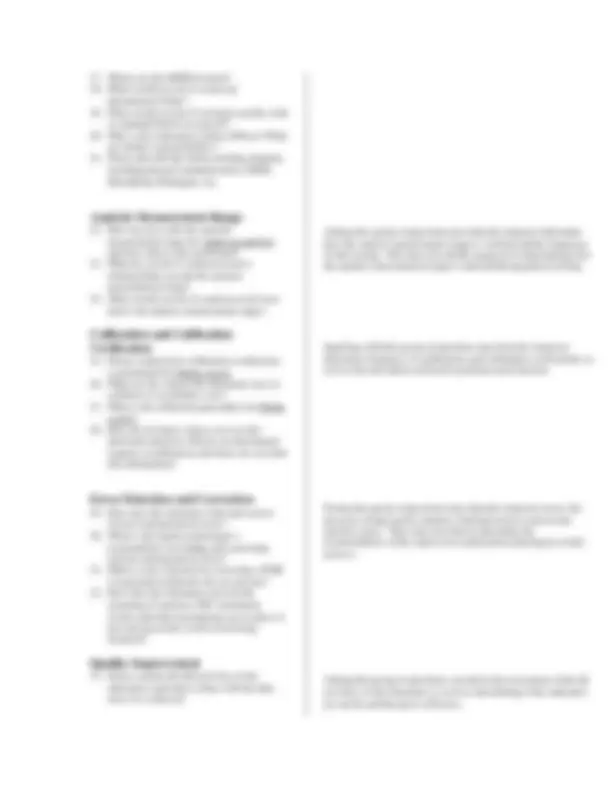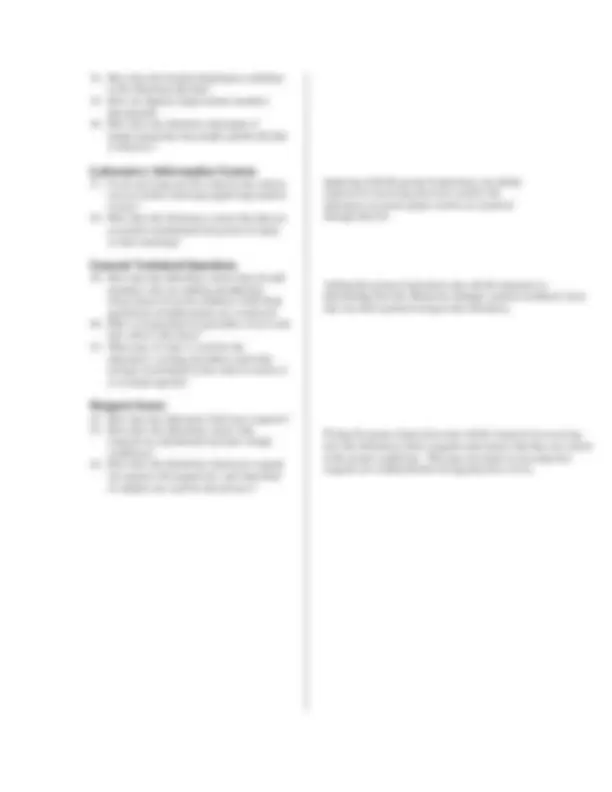




Study with the several resources on Docsity

Earn points by helping other students or get them with a premium plan


Prepare for your exams
Study with the several resources on Docsity

Earn points to download
Earn points by helping other students or get them with a premium plan
Community
Ask the community for help and clear up your study doubts
Discover the best universities in your country according to Docsity users
Free resources
Download our free guides on studying techniques, anxiety management strategies, and thesis advice from Docsity tutors
Insights into the use of probing questions during laboratory inspections. Probing questions are open-ended queries that elicit detailed information about a specific topic, helping inspectors to understand the laboratory's processes and practices more thoroughly. The benefits of using probing questions, provides examples, and suggests a list of questions for various topics such as proficiency testing, quality control, specimen collection, safety, and analytic measurement range. By asking probing questions, inspectors can gain a comprehensive understanding of a laboratory's operations and ensure compliance with regulations.
What you will learn
Typology: Summaries
1 / 4

This page cannot be seen from the preview
Don't miss anything!



Asking this group of questions may aid the inspector in determining how the laboratory’s proficiency testing program functions and how proficiency samples are handled.
Asking this group of questions may result in information about the process the laboratory utilizes when commercially provided PT material is not available.
Posing this group of questions may allow for the assessment of the laboratory’s quality control program, including the bench technologist’s role, identifying out of range controls and any corrective action for out of range controls.
Using this group of questions may reveal how the laboratory performs specimen collection and how patients are identified before collection. This may also help the inspector assess whether the requisition and accessioning systems are adequate and determine if an acceptable process for processing specimens sent to another laboratory has been successfully developed.
Posing this group of questions may help the inspector determine the safety processes of the laboratory. This may lead to a discussion of the Chemical Hygiene Plan, needle safety, and location of safety equipment, and may aid in determining training and persons responsible for the safety program.
Inquiring with this group of questions can aid the inspector in assessing processes used by the laboratory to ensure proper results are reported through the LIS.
Asking this group of questions may aid the inspector in determining how the laboratory manages general technical issues that can affect patient testing in the laboratory.
Posing his group of questions may aid the inspector in assessing how the laboratory labels reagents and ensures that they are stored at the proper conditions. This may also help in assessing how reagents are validated before being placed in service.